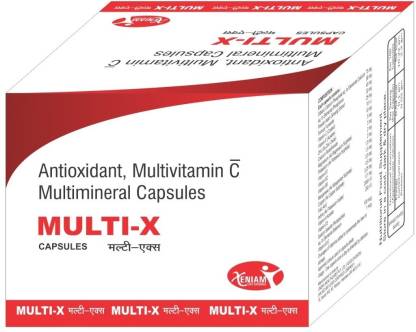
There are three main types of cardiovascular disease prevention: primary, secondary, and primordial. Each one is made up of the same elements but has different effects and starting points. To prevent these problems, it is important for patients to identify their risk factors and create a personal plan. Your goal is to lower your risk of developing cardiovascular problems and live an extended and healthy life. Read on for tips on how to prevent heart disease. This article explains the causes and treatments of various cardiovascular diseases.
Firstly, focus on a heart-friendly diet. A heart-friendly lifestyle is one that is rich in fiber, low levels of salt, and high in vitamins, minerals. Next, it is important to eliminate processed food like white breads and processed snacks. These foods can be harmful to the heart if they are high in fiber. Avoid fast food and packaged snacks. The salt shaker is not a good idea. A high level of sodium can lead to cardiovascular disease.

Exercise is an important part of a healthy lifestyle. Experts recommend 150 minutes moderate exercise per week. That's about 20 minutes per day. Regular exercise can also help lower blood pressure and prevent heart disease. Mindfulness and managing stress can help to prevent heart disease. It's easy to make lifestyle changes and it's not hard!
A healthy diet can reduce your risk of heart disease and reduce the severity of your heart attack. A diet rich in fruits and vegetables is a proven way to lower your chances of developing the disease. A diet high in beans and low-fat proteins may also reduce your chances of developing the disease. Many fish contain omega-3 fatty acids which may reduce your chances of developing heart disease. You can incorporate these strategies into your daily life, if time allows.
Smoking is a significant risk factor for developing heart disease. Trying to quit smoking will help you reduce your risk for coronary artery disease. You should stop smoking. The less cigarettes you smoke, the better for your heart. You can also avoid secondhand smoking to lower your risk of developing heart disease. If you're a smoker, it's important to quit smoking. This will reduce your chance of developing heart disease.

It is important to take steps to prevent heart disease. It is often difficult to identify the disease, but it can increase your chances of suffering from heart failure or other serious complications. It is crucial to take steps to lower the risk of developing heart disease. By adopting healthy habits, you'll be able to reduce the risk of developing the disease. This will ensure that you live a long and happy life. You'll live longer and be healthier if you do.
FAQ
How many calories should I consume daily?
This varies from person to person. The average is 2000 - 2500 calories per day. Based on your age, gender, height and activity level, you will need to calculate how many calories you require.
Are There Any Benefits to Yoga?
Yoga has been popular since ancient times. Yoga is very popular with celebrities as well as ordinary people who wish to be fit and healthy.
Yoga is great because you can stretch your muscles and strengthen them. It also relaxes your mind and makes you calmer.
Yoga and other forms exercise differ in that yoga is focused on breathing techniques.
Practice a variety of poses to increase your flexibility and balance.
What is the fastest way to transform my body?
It all starts by changing your mindset. First, you must decide to make a change.
Once you have decided you want to make changes, you will need to commit to your fitness goals at least for 3 months.
The next step is to find the right program for you.
You also need to set realistic expectations. You shouldn't waste money on a gym membership that doesn't allow you to put in the effort and time required to reach your goals.
Instead, exercise outdoors in your own time.
Walking around the block for an hour per day will help you lose 1 lb in a week.
Once you know what your plan is, it's time to start organizing your life in accordance with this plan.
This means that you should schedule time for exercise every morning before heading to work, and allow yourself to take breaks throughout the day.
Finally, you should reward yourself when you reach milestones. You might be able to buy clothes and accessories that reflect your accomplishments.
Do Men Need A Gym Membership?
A gym membership does not have to be required for men. If you sign up for a gym, however, your money will be much more valuable.
Many gyms offer free trials that let you try the facilities before you pay any fees.
You can use the gym at any time you want, and it doesn't cost anything. Your membership can be cancelled at any time you choose to love it or not.
Which workout is best to build muscle?
Two main types of exercises are required for building muscle mass. These are the isolation exercises as well as compound movements. Isolation exercises target specific muscles while compound moves focus on multiple groups at once.
Your best option to improve your fitness is to work out with exercises that challenge all your major muscle group. This ensures that each session is challenging.
MyFitnessPal can help you keep track of your activity. It allows you to log everything from calories burned to weight lifting. You can also create customized meal plans based upon your goals.
Statistics
- Are You One of the 20% of Guys (mh.co.za)
- Candidates and applicants must pass all four tests at 70% (minimum level) to graduate from Basic Deputy U.S. Marshal (BDUSM) Training. (usmarshals.gov)
- Get free shipping and 25% off today. (healthline.com)
- According to the American Heart Association, blood pressure should be checked at least once every two years, beginning at age 20. (my.clevelandclinic.org)
- Cardmembers earn 5% Back at Amazon.com with a Prime Credit Card. (amazon.com)
External Links
How To
How can a man get in shape in 30 days?
Breaking down your fitness goals into manageable steps is the best way to reach your goals.
Every day, you must work towards your goal. This could mean anything from doing 10 pushups for 5 minutes to running 3km.
Positive results will be achieved if you do this consistently over time.
Be consistent is key. You must persevere until your success is achieved.
What is the main difference between Aerobic Fitness or Anaerobic Fitness
Anaerobic fitness refers to the ability of our bodies to perform intense physical work without oxygen. During periods of high-intensity exercise, we use anaerobic pathways to provide enough energy to complete the task. Anaerobic pathways include glycolysis (creatine phosphate), the phosphagen and lactic acid.
Cardio fitness is, in contrast to aerobic fitness, the practice of sustaining low-intensity exercise. When doing aerobic exercises, oxygen serves as the primary source for fuel for the cells. In other words: The aerobic pathway gives more energy than that of the anaerobic.
You must build your aerobic capacity before you can run a marathon. If you concentrate on building your anaerobic capability, you won’t be able complete the race.
Aerobic fitness can also be called cardiovascular fitness. The most common methods of determining cardiovascular fitness are step tests and VO2max testing.
VO2 Max Testing
VO2max is the maximum oxygen (O2) that your body can use while exercising. This test measures the amount O2 that the body can use when exercising.
This test measures cardiovascular fitness in a way that is most accurate. However, it requires expensive equipment and highly trained professionals to administer the test.
Step Tests
Step tests can be used to assess cardiovascular fitness. They are easy and effective. These tests require you to walk or run on a track or treadmill for a set amount of time, depending on your weight and age.
These tests are simple to perform, cost-effective, and easily accessible from almost any location. For instance, you can walk on a treadmill for 2 minutes, rest for 1 minute, repeat this process for 20 minutes, and then stop. Throughout the session, your heart rate should be within a certain range.
This protocol is called the "Bruce Protocol". Bruce was himself a runner and developed the protocol after realizing his heart rate wouldn't increase when he ran for longer distances.